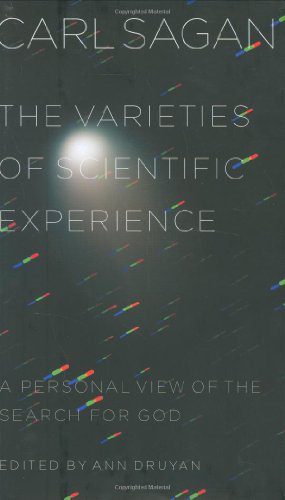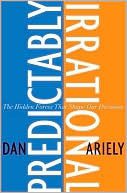Title: The Varieties of Scientific Experience: A Personal View of the Search for God
Author: Carl Sagan
First published November 7, 2006
284 pages, Hardcover
ISBN: 9781594201073 (ISBN10: 1594201072)
Rating: 4.28
Overview
The Varieties of Scientific Experience: A Personal View of the Search for God by Carl Sagan is a thought-provoking exploration of the intersection between science and religion. Sagan’s incredible ability to communicate complex scientific concepts to the general public is on full display as he delves into topics ranging from the possibility of extraterrestrial life to the nature of the sacred.
Edited and updated by his longtime collaborator Ann Druyan, this book offers an intimate look into the mind of one of the greatest scientific minds of our time. With wit, wisdom, and a touch of humor, Sagan’s insights are as relevant today as they were when he first gave the Gifford Lectures in 1985.
Whether you’re a scientist, a philosopher, or simply curious about the mysteries of the universe, this book is sure to inspire and enlighten.
About the Author
Carl Sagan, a renowned scientist, was born in Brooklyn, New York in 1934. He obtained his bachelor’s and master’s degrees from Cornell University and went on to earn a double doctorate from the University of Chicago in 1960.
Sagan became a professor of astronomy and space science and the director of the Laboratory for Planetary Studies at Cornell University. He also co-founded the Planetary Society.
Sagan was widely known for his ability to make science accessible and interesting to the general public. His PBS series, “Cosmos,” won an Emmy and Peabody award and was watched by 500 million people in 60 countries.
A book with the same title was published in 1980, and it remained on The New York Times bestseller list for seven weeks. Sagan authored, co-authored, or edited 20 books, including “The Dragons of Eden,” which won a Pulitzer Prize.
His most controversial books on religion were “Demon-Haunted World” and “The Varieties of Scientific Experience.” Sagan was a leading figure in NASA’s Mariner, Viking, Voyager, and Galileo expeditions to other planets.
Sagan received numerous awards for his contributions to science, including the NASA medals for Exceptional Scientific Achievement and Distinguished Public Service. He was also honored with the Public Welfare Medal, the highest award of the National Academy of Sciences.
Asteroid 2709 Sagan was named after him. Sagan served as Chairman of the Division of Planetary Sciences of the American Astronomical Society, President of the Planetology Section of the American Geophysical Union, and Chairman of the Astronomy Section of the American Association for the Advancement of Science.
He was also the editor-in-chief of Icarus, a leading professional journal devoted to planetary research.
Sagan was a co-founder and President of the Planetary Society, the largest space-interest group in the world, with over 100,000 members. He was a Distinguished Visiting Scientist at the Jet Propulsion Laboratory of the California Institute of Technology.
Sagan passed away in 1996, after a two-year struggle with a bone marrow disease. In their posthumous award to him, the National Science Foundation declared that his “research transformed planetary science… his gifts to mankind were infinite.”
Editoral Review
Carl Sagan was a world-renowned astronomer and author who became known for his popular science books and TV shows. His final book, The Varieties of Scientific Experience: A Personal View of the Search for God, was published posthumously in 2006, and offers a unique perspective on the intersection of religion and science.
In this book, Sagan gives a series of lectures on the subject of the search for God, delivered at the University of Glasgow in 1985. The book is not a work of fiction, but rather a collection of Sagan’s speeches, which have been edited into book form by his wife, Ann Druyan.
Sagan offers his personal views on a variety of topics related to religion and science, including the evolution of human consciousness, the history of religious belief, and the search for intelligent life in the universe. He argues that science and religion are not incompatible, but rather that they can complement each other in the search for truth and meaning.
Due to the subject matter, this book will likely appeal most to readers interested in philosophy, religion, or science. However, Sagan’s engaging and accessible writing style, as well as his ability to make complex ideas understandable, makes this book accessible to a wider audience.
The themes explored in The Varieties of Scientific Experience are also highly relevant to current events and issues, such as the debate over the teaching of evolution in schools and the role of religion in politics. One of the strengths of this book is Sagan’s ability to weave together science, history, philosophy, and personal experience into a cohesive and engaging narrative.
His insights into the evolution of religious belief over time, and the ways in which science has challenged traditional religious worldviews, are particularly compelling. Sagan is also refreshingly honest about his own personal beliefs and doubts, which adds a level of authenticity to his writing.
However, some readers may find the book to be overly dense and scholarly, and may struggle with the complex ideas and arguments presented. Additionally, the book’s focus on the Western philosophical and religious tradition may be limiting for readers interested in non-Western perspectives.
Overall, The Varieties of Scientific Experience is a thought-provoking and insightful book that explores the intersection of science and religion in a nuanced and engaging way. While it may not be for everyone, it is a valuable addition to the genre, and a fitting final work from one of the 20th century’s most beloved and respected scientists.
Rating: 4/5 stars. While the book is not without its flaws, Sagan’s unique perspective and engaging writing style make this book a must-read for anyone interested in the intersection of science and religion.



